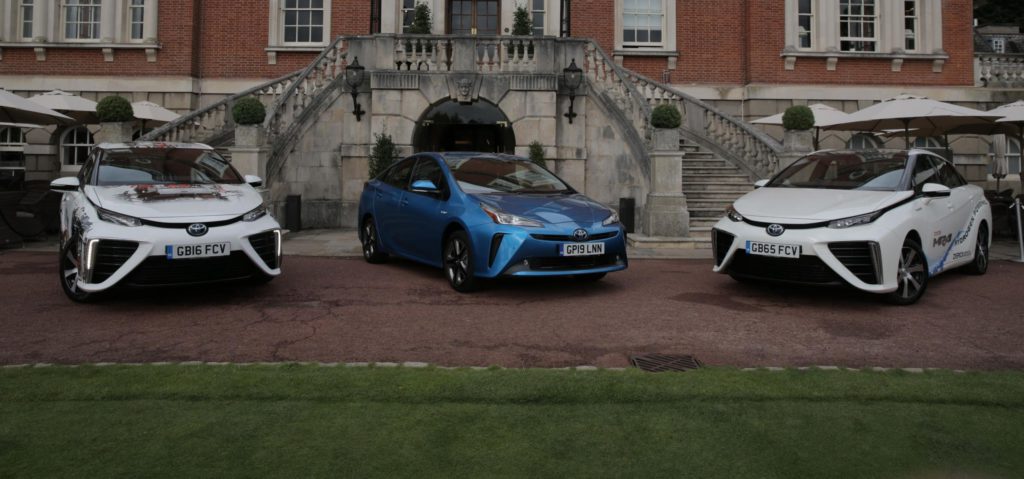Hydrogen on the road – Part 1
21 August 2019

Hydrogen on the road – Part 1
21 August 2019
Autovista Group journalist Phil Curry finds out more about hydrogen and its future in the automotive market from Toyota.
All carmakers are now pursuing electrification strategies to drive down the carbon emissions from their fleets. However, being a leader in hybrid technology, and perhaps the manufacturer closest to its CO2 target, Toyota has the freedom to follow other research paths. Its current direction is towards hydrogen power.
I was invited to an event to learn more about the carmaker's foray into H2 technology, and to drive its production-ready fuel-cell vehicle (FCEV), the Mirai, which has been available on the market since 2015. The day included a presentation by Jon Hunt, manager of alternative fuels at Toyota GB.
′We have been able to invest a lot of money in R&D to get to where we are today,' Jon told us. ′We are also conscious with our global footprint, in our products and our factories and supply chain, all have an impact on the environment. To be sustainable, we need to improve all the areas that we work in.'
It is this philosophy that has driven the carmaker towards hybrid technology in the past and is doing so again with hydrogen technology, the most abundant material known.
Clean technology
Around three quarters (75%) of matter in the universe is hydrogen. However, it does not exist on its own and requires splitting from something first, which can be done using various processes. A majority of current hydrogen production is done in industrial processes, as a by-product. Around 70 million tonnes of hydrogen is used by industry each year already.
Many believe that hydrogen production uses more power than creating electricity. ′One growing way of splitting hydrogen is through electrolysis, separating hydrogen from oxygen in water,' Jon explained. ′This is a clean form of production of the gas, which reduces emissions and therefore increases the sustainability of the product. Additionally, the process can be done locally, so no transport is required to ferry the fuel from place to place, and you can use renewable energy to do it.
′However, in the UK we have 1.5tWh spare energy in the grid, according to 2017 figures, and this can produce 27,000 tonnes of hydrogen, enough to power 135,000 vehicles to 12,000 miles each. Additionally, hydrogen does not dissipate, allowing years of storage. It is also a fuel that can be used to feed back into the energy system, while decarbonising transport, industrial processes, building heat and transport, and can also serve as renewable feedstock to produce ammonia and fertilisers.'
So, by using spare energy that is not being utilised elsewhere, together with renewable sources and clean forms of separation, hydrogen can be produced easily, and be stored for long periods when not in use. Local production also means a reduction in fuel trucks on the road, reducing the carbon footprint further still.
The future
′Back in 2015 we introduced the Mirai, Japanese for future, as the world's first production hydrogen-powered car, Jon said. ′That was designed to demonstrate the durability of the fuel cell. However, it was not the first generation FCEV we have produced, but the seventh-generation.
′We have been working on the technology since 1992, and it has come to the point as a manufacturer that we are happy to put into the market, alongside every other one of our products, a vehicle that works in the same way, with the same durability, same safety and efficiency to prove there is no compromise with the technology.'
The Mirai is based on a hybrid platform. It uses electric motors, has hybrid battery storage, two tanks at the rear, with the fuel cell located under the seats. Not only has Toyota produced a lightweight fuel cell, but it has also worked hard on the pressurised tanks, which are built using carbon fibre, a very strong material often found in motor racing. These are easy to build at scale, reducing the cost further.
The process of producing power in the vehicle is simple. Hydrogen contains energy; it is the most energy-dense item except perhaps nuclear power. It allows you to be able to work a chemical reaction that combines air, drawn in as a normal combustion engine would do, producing water as a by-product, while heat produces the electricity that is then sent to power the motors.